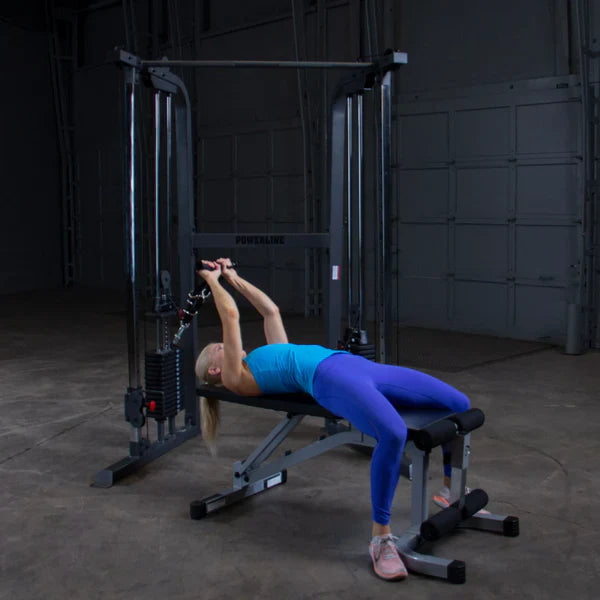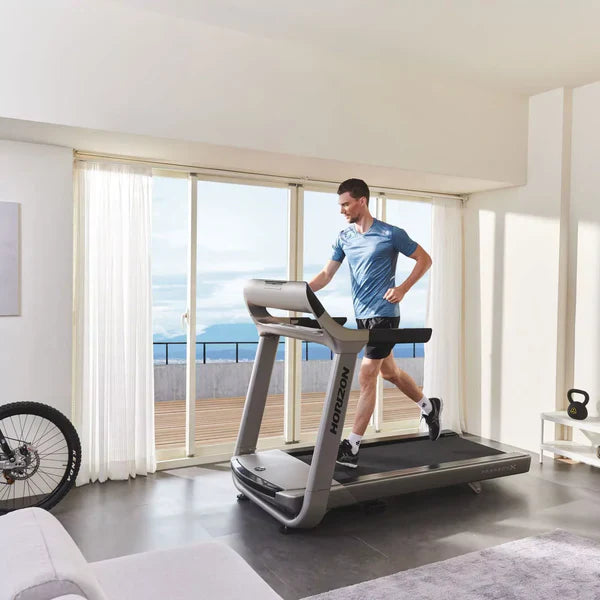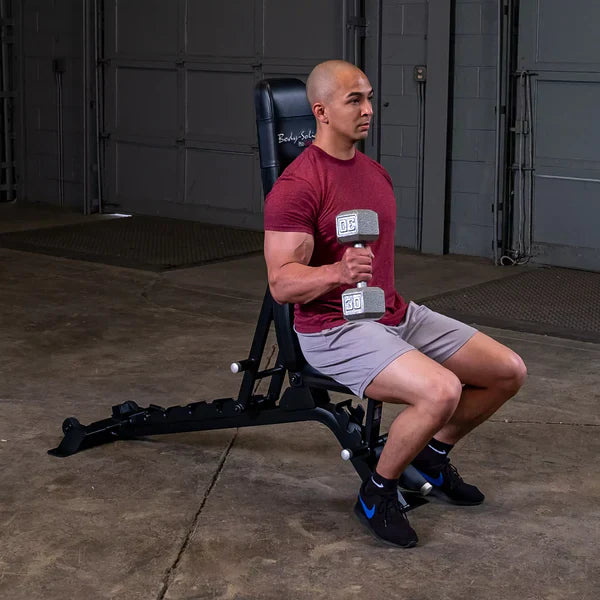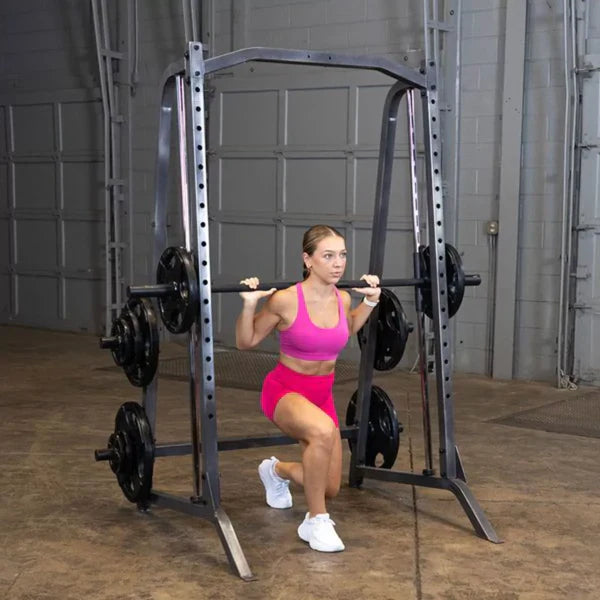If you’ve been building your home gym, chances are you’ve already invested in a few essentials like dumbbells, resistance bands, and maybe even a squat rack. But if you’re looking for a single piece of equipment that delivers versatility, space-efficiency, and long-term value, a functional trainer might be exactly what you need.
In this article, we’ll explore why a functional trainer could be the perfect upgrade for your fitness space, the functional trainer benefits you can expect, how to choose the best functional trainer for home gym setups, and even how to structure a simple functional trainer workout routine at home.
What Is a Functional Trainer?
A functional trainer is a cable-based machine that uses adjustable pulleys, weight stacks, and attachments to provide hundreds of possible exercises. Unlike traditional weight machines that isolate muscles with fixed movements, a functional trainer allows free, natural motion patterns that mimic real-life activities.
This adaptability makes the functional trainer one of the most versatile pieces of equipment for strength training, functional fitness, rehabilitation, and sports performance.
Functional Trainer Benefits
1. Versatility for Every Muscle Group
With a functional trainer, you can target your chest, back, arms, shoulders, legs, and core—all with one piece of equipment. From chest presses and lat pulldowns to squats and cable crunches, you’ll never run out of exercise variations.
2. Safe and Beginner-Friendly
Unlike free weights, functional trainers provide controlled resistance with cables, making them safer for beginners and those training alone at home. You don’t need a spotter, and the guided motion reduces the risk of injury.
3. Space-Saving Design
While a full gym setup might require a squat rack, barbells, dumbbells, and multiple machines, a functional trainer consolidates them into a single station. This is especially important if you’re working with limited home gym space.
4. Rehabilitation and Injury Prevention
Because the machine supports natural movement patterns, it’s often used in physical therapy clinics. It allows you to strengthen stabilizer muscles, improve mobility, and train through injuries without overloading joints.
5. Progressive Resistance
Most functional trainers come with dual weight stacks, allowing smooth progression from light resistance to heavy lifting. Whether you’re a beginner or advanced lifter, you’ll always have room to grow.
Why a Functional Trainer Is Perfect for a Home Gym
When building your home gym, efficiency is everything. You want equipment that:
-
Takes up minimal space
-
Replaces multiple other machines
-
Works for both strength training and conditioning
-
Can be adjusted for different users in your household
A functional trainer checks all of these boxes. Instead of purchasing a variety of machines, you can invest in one high-quality trainer and cover nearly every training goal—strength, hypertrophy, endurance, and even sports-specific drills.
Choosing the Best Functional Trainer for Home Gym Setups
When searching for the best functional trainer for home gym environments, consider these factors:
1. Size and Dimensions
Measure your space carefully. Some trainers are compact and designed for small rooms, while others require more height clearance for pull-ups and overhead movements.
2. Weight Stack Capacity
Beginners may do fine with lighter stacks (150–200 lbs per side), while advanced lifters may want heavier stacks (220–300 lbs per side) for long-term progression.
3. Attachments and Accessories
Look for functional trainers that include a variety of handles—D-handles, triceps ropes, ankle cuffs, and even a pull-up bar. More attachments mean more exercise variety.
4. Adjustability
A good trainer should allow pulley adjustments at multiple heights to support everything from bicep curls to cable squats.
5. Build Quality
Since this is an investment, choose a sturdy model made from high-grade steel with smooth pulley action. Durability is key for long-term use.
Functional Trainer Workout Routine at Home
If you’re not sure how to get started, here’s a simple functional trainer workout routine at home that covers all major muscle groups. Perform 3 sets of 10–12 reps for each exercise, resting 60–90 seconds between sets.
Upper Body
-
Chest Press (Cable Fly Alternative) – Works chest and shoulders.
-
Lat Pulldown – Targets back and biceps.
-
Seated Row – Strengthens lats, traps, and rhomboids.
-
Overhead Shoulder Press – Builds strong shoulders.
Lower Body
-
Cable Squats – Engages quads, hamstrings, and glutes.
-
Cable Deadlifts – Great for posterior chain development.
-
Cable Lunges – Improves balance and unilateral strength.
Core
-
Cable Woodchoppers – Perfect for rotational core strength.
-
Cable Pallof Press – Builds anti-rotation stability.
-
Cable Crunches – Directly targets the abs.
This routine takes less than an hour and delivers a full-body workout with just one machine.
Functional Trainer vs. Other Equipment
You might be wondering: Why not just stick to free weights or resistance bands? Here’s how a functional trainer compares:
-
Versus Free Weights: Free weights are excellent for building raw strength and stability, but they require more space, racks, and safety measures. Functional trainers provide similar results with added safety and versatility.
-
Versus Resistance Bands: Bands are portable and cheap but don’t offer consistent resistance throughout the movement. Functional trainers provide smooth, adjustable resistance across the full range of motion.
-
Versus Smith Machine or Single-Purpose Machines: Functional trainers win in versatility. Instead of being locked into one motion, you can adjust the pulleys for hundreds of exercises.
Who Should Buy a Functional Trainer?
A functional trainer is ideal for:
-
Beginners who want safe, guided workouts at home.
-
Busy professionals who need an all-in-one solution for strength training.
-
Families with multiple people using the home gym.
-
Athletes looking for sports-specific, functional training.
-
Anyone rehabbing an injury who needs joint-friendly training options.
Final Thoughts
A functional trainer isn’t just another piece of gym equipment—it’s a complete training solution. From its space-saving design to its unmatched versatility, it offers everything you need to build strength, improve mobility, and achieve your fitness goals right from home.
If you’re serious about creating a home gym that supports long-term progress, investing in the best functional trainer for home gym setups could be the smartest move you make. With endless functional trainer benefits and the ability to follow a structured functional trainer workout routine at home, you’ll have everything you need for a balanced, effective fitness program.





